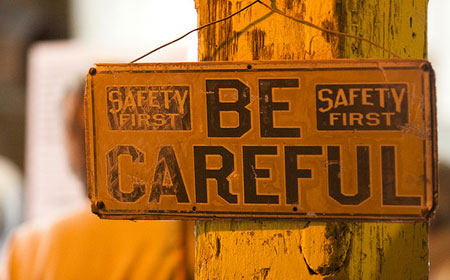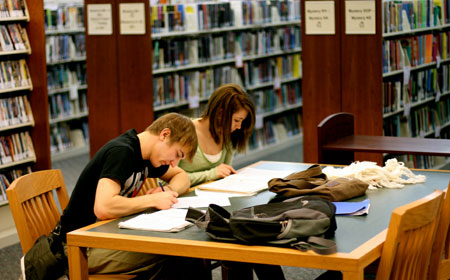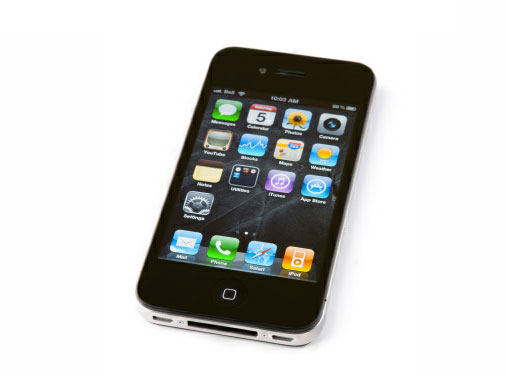By: Stephanie Brooks
Technology in education has made it possible to learn outside of the old-fashioned textbook methodology. While education originally relied largely on reading from textbooks, completing assignments, and memorization, online media and technological devices have cleared the path for far more interactive education with a multimedia slant. The United States government personally advocates the implementation of technology in school in attempts to engage and inspire students in a 21st century context via the No Child Left Behind Act.
 When technology was first making its way into schools, it took the form of a specific computer class, mostly where students practiced typing and played basic educational games to make the learning process more enjoyable. However, technology has now become an integrated part of education, exceeding the bounds of a single class and leaking into the conventional classroom. The rapid advancements in technology create a constant need to adapt in our educational system. This can be problematic for schools that can’t necessarily afford expensive upgrades to technological platforms. But by and large, technology has changed education for the better, appealing to students that have grown up alongside developments in the internet, smartphones, online courses, and YouTube.
When technology was first making its way into schools, it took the form of a specific computer class, mostly where students practiced typing and played basic educational games to make the learning process more enjoyable. However, technology has now become an integrated part of education, exceeding the bounds of a single class and leaking into the conventional classroom. The rapid advancements in technology create a constant need to adapt in our educational system. This can be problematic for schools that can’t necessarily afford expensive upgrades to technological platforms. But by and large, technology has changed education for the better, appealing to students that have grown up alongside developments in the internet, smartphones, online courses, and YouTube.
Broadcasted Seminars
Broadcasted seminars are any kind of lecture or instructional guide streamed on the internet rather than in person. They may take the form of a regular lecture, streamed with a built-in computer camera, or they may be demonstrations enacted from the desktop or specific software of the instructor. The latter is usually referred to as a Webinar. Webinars often function like a chat room module where demonstrations are held alongside a live question and answer session. A student may be learning how to use a valuable, complex tool such as Photoshop, and will get the rare ability to ask an Adobe representative how to utilize certain functions within the program. This is great for any kind of class that is of pure instructional content, imparting the student with a specific skill. You could also argue that it’s really only conducive towards “trade” techniques, unlike the broader concepts taught in English literature classes or the scientific concepts illustrated in biology classes. Instructors use webinars to train students in a specific technique, with instantaneous solutions for any troubleshooting the student may experience along the way.
On the other hand, an instructor could utilize the internet to broadcast a seminar as though they were speaking in person to an audience that otherwise cannot make it to a regular classroom. Online colleges often implement this format and there are many advantages to it in terms of being able to access the lecture from any location. Seminars are occasionally pre-recorded and broadcast at a specific time. Students need merely to have a relatively dependable internet connection with streaming capabilities. Another example of a broadcasted learning environment is the language learning program, Glovico. With Glovico, students can learn a new language from a native speaker in another part of the world, mainly through Skype videoconferencing. The student gets one-on-one time with the native speaker provided they have a webcam and headset or built-in microphone. The price of the class provides for struggling teachers in Africa, Asia, and Latin America. Learning a language in a classroom can be more difficult because there are so many students, each with varying proficiencies. However, with Glovico, the student gets the teacher all to themselves, and focuses on actual dialogue rather than memorizing vocabulary out of a textbook.
Tablets in Class
 Imagine how much time could be cut down between classes at a high school if students didn’t need to lug their heavy textbooks back and forth to their lockers. A fifteen minute gap between each of the seven class periods results in an hour and a half of time devoted in the school day simply for commuting to and from a locker. If each student were required to have a tablet with eBooks for each class already installed, the student would be able to access their material all from one device. They might need a spiral notebook and a pen to visualize concepts out on paper, but investing in a stylus for their tablet can accomplish the same purpose. Cutting down on paper trails would have an eventual, if slow, effect on the environment.
Imagine how much time could be cut down between classes at a high school if students didn’t need to lug their heavy textbooks back and forth to their lockers. A fifteen minute gap between each of the seven class periods results in an hour and a half of time devoted in the school day simply for commuting to and from a locker. If each student were required to have a tablet with eBooks for each class already installed, the student would be able to access their material all from one device. They might need a spiral notebook and a pen to visualize concepts out on paper, but investing in a stylus for their tablet can accomplish the same purpose. Cutting down on paper trails would have an eventual, if slow, effect on the environment.
Some schools are already utilizing eBooks and tablets. In most cases, the textbook is simply converted into a PDF where it can be easily downloaded onto the tablet. However, some eBooks are more interactive, with hot spots, hyperlinks, and integrated videos. A Kindle device has a function in which the text will be played as audio, for students that are still learning to read, suffer disabilities that prevent them from reading, or students that simply learn better when they can absorb material both visually and audibly. Passages in the books can be bookmarked and highlighted seamlessly, without fear of damaging the book since it is merely a virtual copy. Of course, portability is also a major benefit to an eBook, which can be toted anywhere and is usually no bigger than half of a standard sheet of paper and nearly as thin.
Tablets are also a great platform for utilizing educational apps while at school. In reference to Apple’s coined term, there literally is an app for everything, including academics. Apps could be used for minor needs, such as a calculator for math projects or a world map for reference in a geography lesson. There are basic calculator apps as well as full-functioning graphing calculator apps, saving hundreds of dollars that would otherwise have been spent on an expensive TI-83 or similar model. Apps could also be used to understand larger concepts. Frog Dissection is an app for iPad in which students can conduct a full, virtual dissection without needing the actual supplies, frog, and smelling up the classroom with formaldehyde. Apps like Edmodo put education in the students’ own terms, with an interface that is strikingly similar to the social networking platforms that they are already intimately familiar with. Such apps close the gap between students and teachers, taking them from the sterile teacher acquaintance to a lovable mentor that they can learn from both in and outside the classroom. Gaming apps such as Lemonade Stand could be used by teachers to illustrate the basics of capitalism, supply and demand, and consumerism.
Online Colleges
Broadcasted seminars and tablets are just a faction of the broader technology used in online colleges. Students can now get a degree without ever leaving the comfort of their home, taking classes usually at their own pace and schedule. This is especially helpful for students that must work during the day and need to access their coursework at night, or single parents that are struggling to raise a child alongside the demands of college. Online degrees come in every shape and size, ranging from an Associate’s degree to a Ph.D. degree, and are offered in every subject imaginable. Many online schools have much lower tuition than regular schools, which could help a student that would need to take out a loan if they attended a brick-and-mortar school. They also don’t need to factor in commuting costs, as they can literally do their coursework from any location with a viable internet connection. Lastly, students can opt for a hybrid of online courses and in-the-flesh classes if doing so enables them to have a slightly more flexible schedule.
Ithaka S&R released a study in May of this year evaluating whether or not online colleges were as effective as traditional colleges based on performance. In the study, 605 students at six public universities were instructed to take either a traditional course or a hybrid course combining an hour per week of face-to-face instruction with online coursework. The study found that the pass rates, final exam scores, and standardized test scores of the hybrid school students were just as good as those enrolled in the regular class. The hybrid-format students also took less time to complete the course than the traditional students without sacrificing their grades.
Furthermore, if you’re under the misconception that online colleges are somehow less prestigious, it should be noted that Carnegie Melon conceptualized the Open Learning Initiative, also referred to as OLI. OLI is a grant-funded organization for online courses inspired by Carnegie Melon’s expertise in cognitive tutoring, and it uses advanced cyber intelligence to deduce areas that a student is struggling or excelling in. The OLI is used both stand-alone and in adjacent to regular courses, depending on the student’s individual needs. The artificial intelligence can help close the gaps in understanding for the student, quizzing on topics that the student doesn’t readily grasp.
Problems with Technology
 The main argument for technology in the classroom is that emerging students should be able to apply classroom concepts to daily life, and a large part of daily life revolves around technology. Students today are apt at using technology, and tools such as laptops, smart phones, and tablets are already second nature to them. Taking technology out of the learning equation would be alienating an integral part of the students’ abilities. Likewise, even if the student isn’t already technology-savvy, that’s even more of a reason to embrace the skill. Understanding technology is becoming more and more important in the workplace and other areas; competing with peers in the 21st century simply necessitates the need for technological finesse.
The main argument for technology in the classroom is that emerging students should be able to apply classroom concepts to daily life, and a large part of daily life revolves around technology. Students today are apt at using technology, and tools such as laptops, smart phones, and tablets are already second nature to them. Taking technology out of the learning equation would be alienating an integral part of the students’ abilities. Likewise, even if the student isn’t already technology-savvy, that’s even more of a reason to embrace the skill. Understanding technology is becoming more and more important in the workplace and other areas; competing with peers in the 21st century simply necessitates the need for technological finesse.
Digital innovations can be a source of problems for schools as well. Not all schools can keep up with the rapidly changing technology. Upgrading equipment is often costly and schools may not have the manpower to handle the equipment. Most classrooms contain at least twenty students, which can take up a great deal of internet bandwidth in the instance that they all must access their laptop or tablet at once. Likewise, new hires may be necessary for teaching students how to use the newer digital media, yet another expense to the school. This could be as complex as needing an IT staff to work out potential glitches in the system to hiring teachers with a comprehension for various software instead of teachers that are somewhat less skilled with technology. If a student is required to do homework using the tablet, their parents may not be able to help them with any questions they may have if they are not familiar with the software or equipment. Furthermore, an online school doesn’t offer the same social benefits of a regular school. Without a classroom where students can form friendships and relationships with their peers, they may not learn the same social cues as regular students. Without any real face-to-face time with their teacher, they may take the classes less seriously.
Many teachers believe that smartphones and tablets, with internet connectivity and text messaging services, can merely be a source of distraction for students as opposed to a learning tool. It may be difficult for a teacher to monitor her students so closely in class as to determine whether they are utilizing educational apps on their tablets or browsing Facebook. The teacher must decide whether or not to use filtered browsing on the devices to cut down on distractions, which might not be an option if the child owns the device. There are also discrepancies as to how much of a crutch technology can be to a student. Schools once debated about whether or not certain types of calculators should be allowed in class, as they essentially solved the problems for students that struggled with math. The same may be true for apps that supply quick, accessible answers for problems that a student should actually be thinking about in greater depth.
The New York Times article “In Classroom of Future, Stagnant Scores,” discusses a school in the Kyrene School District that has fully implemented technology in the classroom. Since 2005, the school has invested around $33 million in technology, par a passing vote. Children use laptops and tablets for their work and integrate things like Facebook groups into regular projects. Unfortunately, the school is also suffering from low standardized test scores. While statewide test scores have risen, Kyrene School District remains stagnant in the face of all of their innovation. Teachers worry that while the technology is engaging on a creative level, the students may be missing out on basic concepts like math and language. Other proponents of technology point out that standardized test scores may not be the best gauge of student intelligence and creativity. Still others yet reason that there’s no reason to spend millions of well-earned tax dollars on a system before knowing whether or not it is sincerely helpful for educational growth.

 Rich Kiker is the Director of Online Learning at a K-12 school district in Pennsylvania, a blogger, an online professor, and a Google Certified Apps for Education Trainer. Other consulting roles include eLearning design, social learning, technology pathways development, and 1 to 1 computing. He can be reached at
Rich Kiker is the Director of Online Learning at a K-12 school district in Pennsylvania, a blogger, an online professor, and a Google Certified Apps for Education Trainer. Other consulting roles include eLearning design, social learning, technology pathways development, and 1 to 1 computing. He can be reached at 




















































